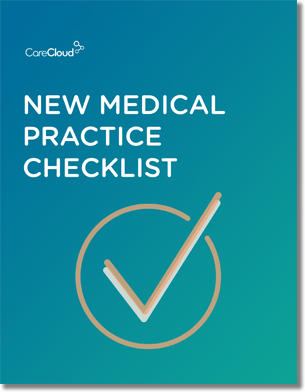If you were among the first to purchase a cell phone – and we’re talking the clunky hip box kind – then your options were a little limited. But remote telephone conversations became a necessity for you, and you did what was required to solve the problem.
However, now there are a ton of cellular phone models on the market, and a multitude of vendors address very different sets of needs. The practice management landscape is undergoing a similar transformation – your software may have once been the best suited to fulfill your needs, but the capabilities of newer systems have changed drastically over the last half-decade or so.
Let’s explore the challenges that make your practice management software outdated.
1) Healthcare Gets HITECH
Since passing in 2009, The Health Information Technology for Economic and Clinical Health (HITECH) Act has pushed doctors and their practices to make the switch to electronic records, which many in the industry and government feel will result in more efficient tracking of patient care and lower healthcare costs.
As part of the act, the federal government is offering financial incentives. In 2015, it will begin penalizing those physicians who lag behind.
While recent data indicates that over 50 percent of doctors have taken part in the HITECH Act by adopting an EHR with required meaningful use capabilities, a series of major changes to the way medical groups track, report and collect on patient care is often overlooked.
Improving patient care is a critical goal, but the lifeblood of any medical office is the billing and collections process that underpins all care delivered.
The government has already implemented a series of regulations that are significantly impacting the way doctors and their staff not only provide care, but gain reimbursement as well.
In addition to the changes, providers see from the HITECH Act, new coding sets will require many medical groups to replace or switch out their practice management systems to adapt to changes in billing, too. Many of these systems were developed in the ‘80s and ‘90s and cannot accommodate new industry standards.
2) 9 Times More Codes
The tidal wave that is the transition from ICD-9 to ICD-10 is set to hit medical groups starting on October 1, 2014. At that time, all healthcare providers will be required to comply with new government regulations or potentially experience greater difficulties in processing insurance claims and receiving reimbursement.
This transition to ICD-10 requires all medical groups accepting commercial?and government insurance to phase out ICD-9 coding and incorporate ICD-10 billing requirements into their administrative and overall practice management workflow.
This will increase the number of diagnoses and procedural codes used in billing for patient care from 17,000 to more than 155,000. This massive change will require doctors and staff who have used ICD-9 codes for decades to now learn volumes of new medical terminology and be far more specific in documenting patient care just to get paid.
3) ANSI 5010 Rears Its Head
In addition to ICD-10, there is another governmental mandate in effect that has many medical groups scrambling. Some are still are not in compliance with the recent ANSI 5010 change, or even capable of ever achieving compliance with it.
ANSI 5010 is the new version of HIPAA transaction standards that regulates?the electronic transmission of healthcare transactions. The 5010 standards will replace the existing 4010/4010A1 version of HIPAA transactions and address many shortcomings, including the fact that 4010 does not support new ICD-10 coding.
This mandate completely alters how medical practices configure and submit insurance claims to insurers for payment, which creates a headache for providers.
With many of these practices using outdated practice management systems, it’s no wonder that as of January 1, 2012 – when all practices needed to complete electronic transactions in an ANSI 5010-compliant format – fewer than 10 percent could.
These electronic transactions include vital medical practice operational functions like claim creation and submission, eligibility inquiries and remittance advice. Medical groups that fail to comply with this mandate are facing an increase in denied claims, slower payments and increased customer service issues.
Assessing Your Practice’s Needs: The New Rules of PM Software
Taken together, these changes are compelling many in the industry to look at more modern IT systems that can deliver lower cost, greater flexibility and easier implementation – safeguards against the turbulence ahead. Practices have two broad options: client/server hardware and software or cloud-based solutions.
While client/server hardware was the norm (and often the only choice) the last time many practices made a technology decision, the world has definitively changed. The cloud has become a part of people’s daily lives – thanks to the moves in banking, retail, travel and other industries online – while also becoming a reliable infrastructure for many businesses.
Consider how large enterprises like GE, Wells Fargo, and Delta Air Lines have switched their customer relationship management tools from large client/server models to Salesforce.com’s sleek and nimble cloud-based solution. Companies are feeling the financial benefits of greater flexibility, access and connection to the system they use to manage and measure their customers and businesses.
Stay tuned for the next installment to check out why switching to a cloud-based solution may be best for your practice!

Do you know what you need when setting up a new medical practice?



